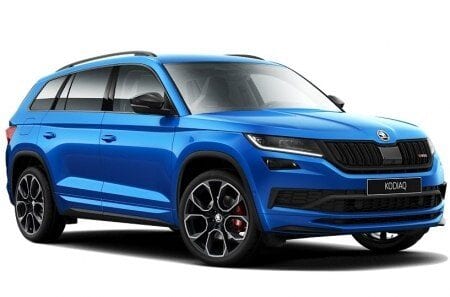
Test drive GMC Typhoon
This car can be considered the grandfather of all modern supercrossovers. We will tell you why it was made, why it is remarkable - and why it is able to impress even 30 years later
Imagine: it's the beginning of the nineties, you are a successful American. Enough to afford a cool sports car like the Chevrolet Corvette, or even a mid-engined Italian exotic with a prancing stallion. And here you are, all so impetuous and invincible, standing at a traffic light next to an ordinary pickup truck, whose driver challenges you to a duel. A condescending smile, the roar of the engine, the start ... And suddenly it doesn’t, doesn’t even break, but literally shoots out, as if a giant spring had worked! Who's got a truck here?
It is not known for certain how many owners of fast cars, after such humiliations, had to seek psychological help, but the bill probably went into the hundreds. After all, this wild pickup was not a fantasy of a crazy lone tuner, but a serial factory product. And we must understand that this was happening at a time when even ordinary crossovers simply did not exist: sports cars separately, cars separately, and SUVs - at the opposite pole from the very concept of speed.
The pickup in question was the GMC Syclone - the result of a combination of several adventurous stories. It all started with an extremely unconventional muscle car called the Buick Regal Grand National: contrary to all American canons, it was equipped not with a brutal V8, but only with a V-shaped "six" with a volume of 3,8 liters. But not simple, but turbocharged - which made it possible to produce more than 250 horsepower and almost 500 Nm of thrust. Not bad for the mid-1980s crisis-ridden US auto industry.
Surprisingly, no one followed the Buick's example: turbo engines in America remained exotic, and the transition of the next generation of the Regal model to a front-wheel drive platform automatically left the Grand National without an heir. In search of a new home for their miracle engine, Buick engineers began to knock on the doorsteps of their neighbors in the General Motors concern, and at some point, either out of despair or as a joke, they built a prototype based on a simple Chevrolet S-10 pickup truck.
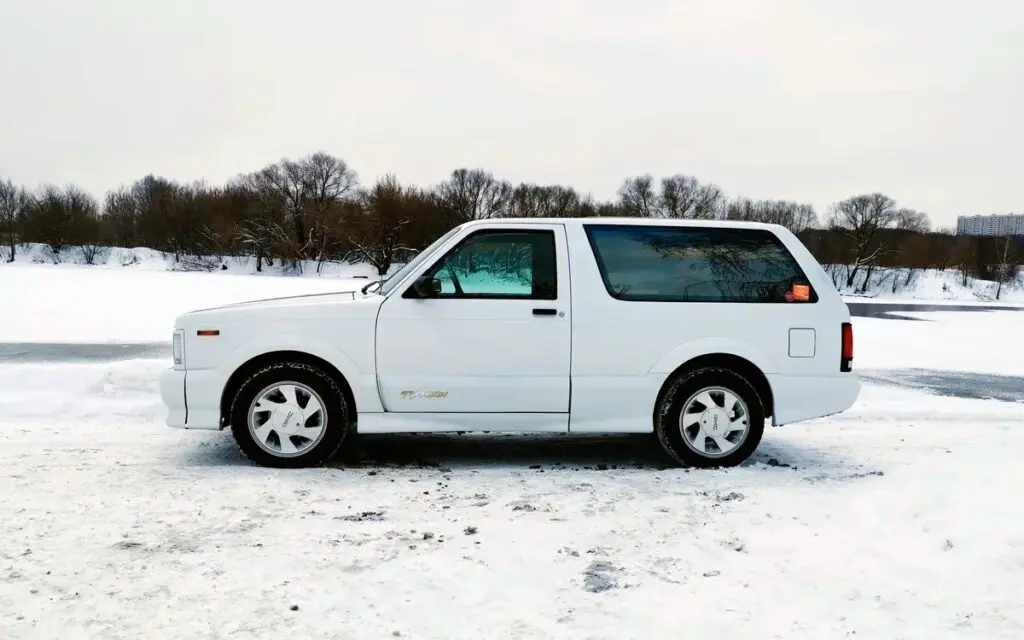
The idea was not appreciated at Chevrolet. Perhaps, as they were preparing their own powerful version of the full-size truck C1500 454SS - with a giant V8 of 7,4 liters, developing only 230 forces. At the time, it was also quite daring, but it could not be compared with what eventually came out of GMC. They said: "Damn it, why not?" - and gave the Buick sorcerers their own Sonoma pickup to be torn apart. In fact, the same Chevrolet S-10, only with different nameplates.
No sooner said than done. It quickly became clear that it was impossible to simply take and put a motor from Grand National into the Sonoma: in order for it all to function normally in the serial form, too many alterations were required. And instead of abandoning the idea, the Buicks decided to make another engine! Do you feel how much enthusiasm there was in these people?

But enthusiasm is not equal to recklessness. It was based on a 160-horsepower V6 4.3 from the usual "Sonoma", and the most important thing to know about it - in fact, this is a classic Small Block 5.7, only shortened by a couple of cylinders. And the Small Block is, among other things, the uprated versions for the Chevrolet Corvette. From there, many parts migrated under the hood of the pickup: the piston group, the fuel system, the intake and exhaust elements, but most importantly, the Buick people screwed a large Mitsubishi turbine to the engine, capable of blowing out 1 bar of excess pressure. The result was 280 horsepower and 475 Nm of thrust, which went through a four-speed Corvette "automatic" to both driving axles.
It was thanks to the all-wheel drive that the frenzied Sonoma, now named Syclone, received such sensational dynamics. The passport said the incredible: 4,7 seconds to 60 mph (97 km / h) and a quarter mile in 13,7 seconds. The real measurements of the Car and Driver edition turned out to be a little more modest - 5,3 and 14,1, respectively. But it was still faster than the Ferrari 348ts, which the journalists put in direct comparison with the Cyclone! Not forgetting to pay attention to the gigantic difference in price: the Italian sports car cost $ 122 thousand, and the American pickup - only $ 26 thousand.
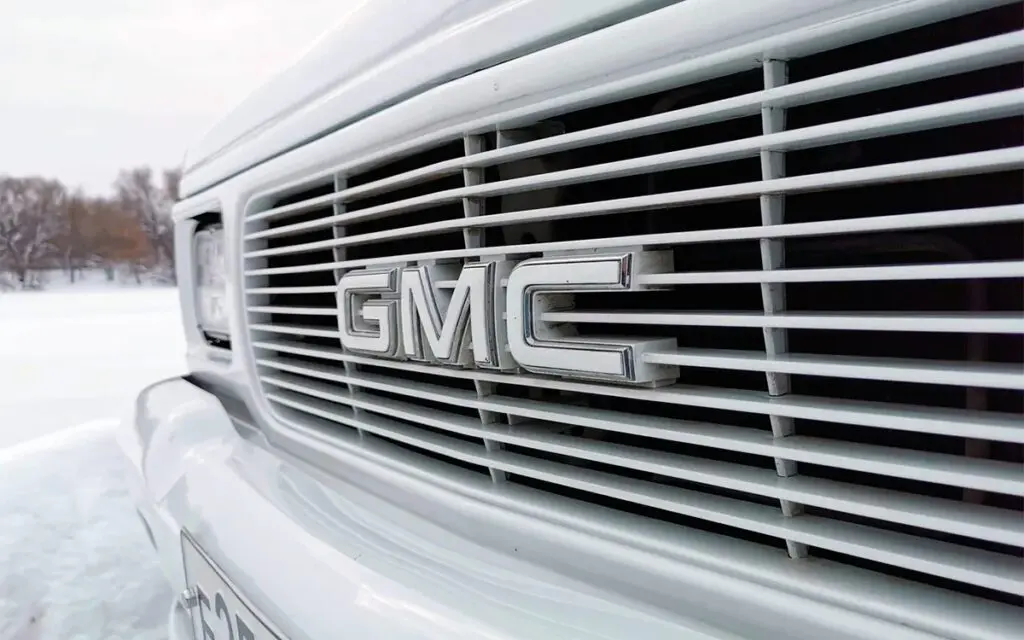
Against this background, no one bothered that Ferrari overtook GMC by 100 seconds to the 3,5 mph mark, reached 120 by as much as fourteen faster, and there was no point in comparing handling. A sensation occurred, Syclone powerfully went through the headlines - and thus, paradoxically, signed its own verdict. Rumor has it that the top management of General Motors saw the super pickup as a threat to the flagship Corvette.
Moreover, the threat is not a market one. The small company Production Automotive Services, which was given the assembly of Cyclones, managed only three thousand copies in its debut 1991 - for comparison, the Corvette found 20 thousand buyers at the same time. But the reputation of America's premier sports car could really suffer: in fact, where is it seen to be overtaken by a truck, which is also a quarter cheaper? In general, legend has it that the people from GMC were ordered to slow down their creation at least a little and at the same time raise the price.
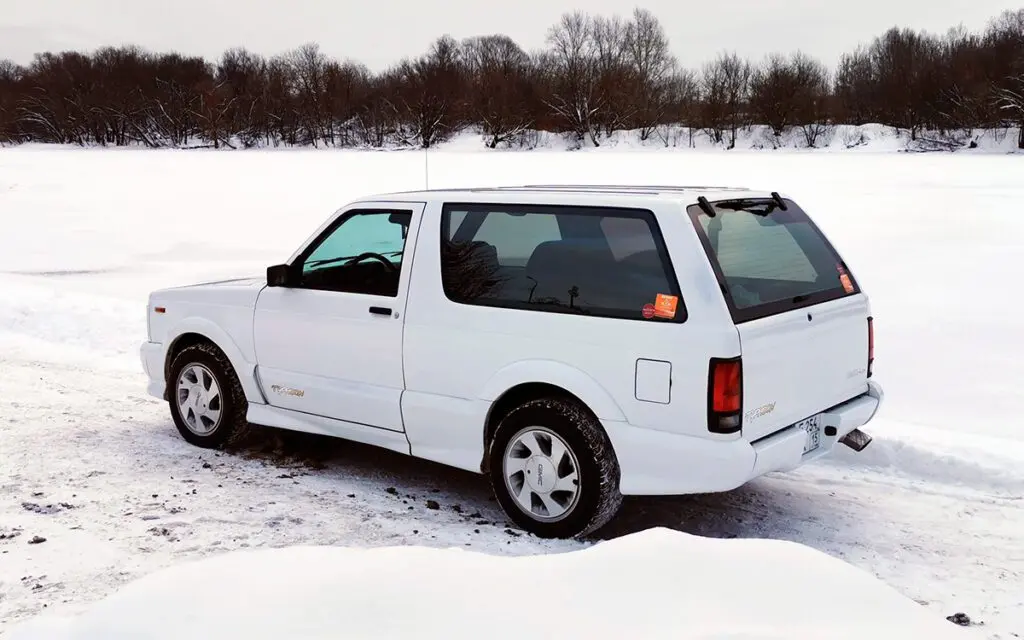
They considered it beneath their dignity to derate the engine or just inflate the cost, but they found a way out: they transplanted all Syclone insides into the Jimmy soplatform "Sonome" SUV. Purely structurally, it was 150 kg heavier, and purely economically - three thousand more expensive. You know, extra seats, metal, trim, third door, that's all. This is how the Typhoon SUV appeared, which you see in these photos.
One of the confirmations of this story is the Syclone inscription on the engine. Nothing prevented the creators from replacing it, because they drew the Typhoon's corporate logo with the same daring font. But all 4,5 thousand produced cars were just like that, as if hinting that the "Cyclone" did not die down by itself.
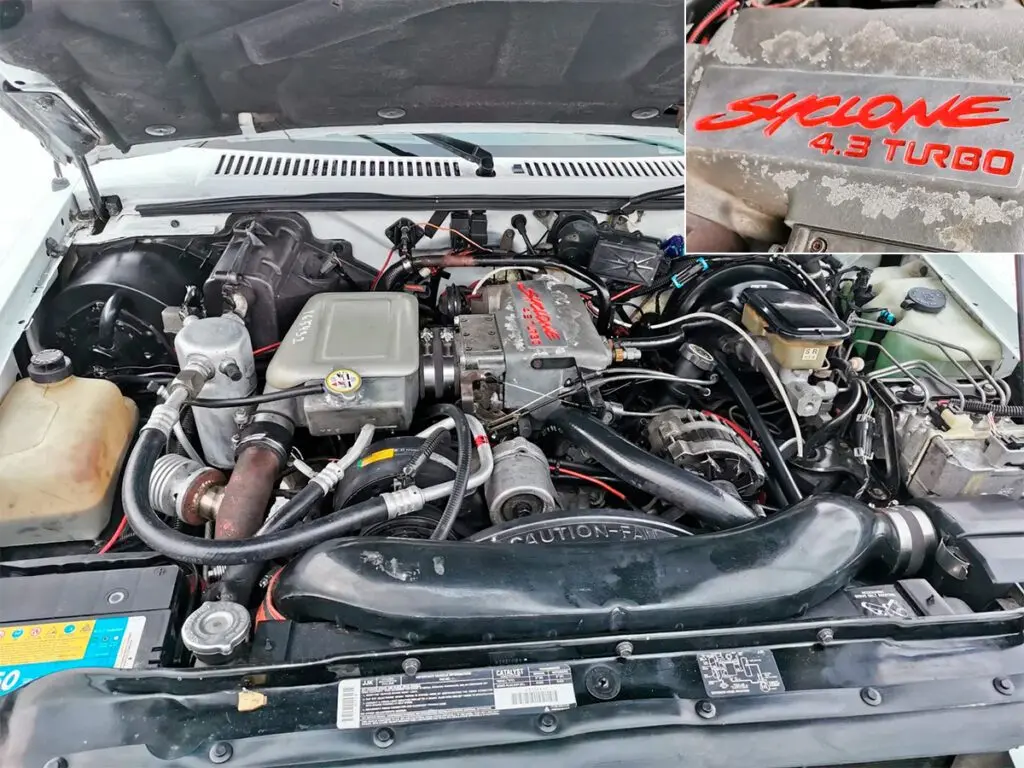
Frankly speaking, Typhoon is pretty damn effective even today. The simplicity, if not the primitiveness of the body shape, goes well with the sports body kit, and the wider track and the suspension lowered by 7,5 cm give the Typhoon a posture worthy of a real athlete. It seems to be nothing supernatural, but it turned out so harmoniously that it will never become outdated. But the interior is the complete opposite. He was bad from the start.
The interiors of American cars of that era did not indulge in aesthetics and exquisite materials at all - let alone a simple and affordable SUV. For the Typhoon, the interior of the original Jimmy was not altered in any way - except for the instrument panel, which was simply removed from the turbocharged Pontiac Sunbird for the boost pressure gauge.
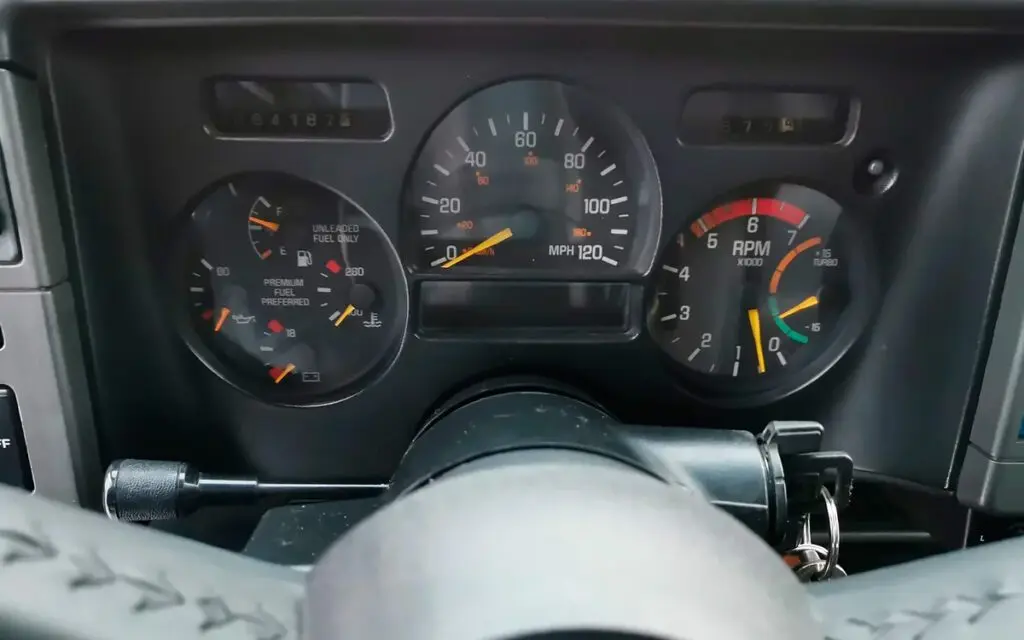
And yes, everything is very sad here. The interior is assembled from the most terrible types of plastic, and not only without love, but perhaps even with hatred. And in the dark. Even the maximum configuration with leather electric seats, air conditioning and a cool radio tape recorder does not help: it is hardly more comfortable here than in the VAZ "nine". But to be honest, it doesn't matter in the slightest.
A turn of the key - and the engine bursts out with a low, uterine rumble, not letting you forget about the roots: it sounds not like a V6, but exactly like three-quarters of a V8. With great effort I translate the fuzzy transmission lever into "drive" ... An amazing thing: from the "Typhoon" one could expect any kind of rudeness and roughness, but in life it turns out to be a real kind-hearted man!
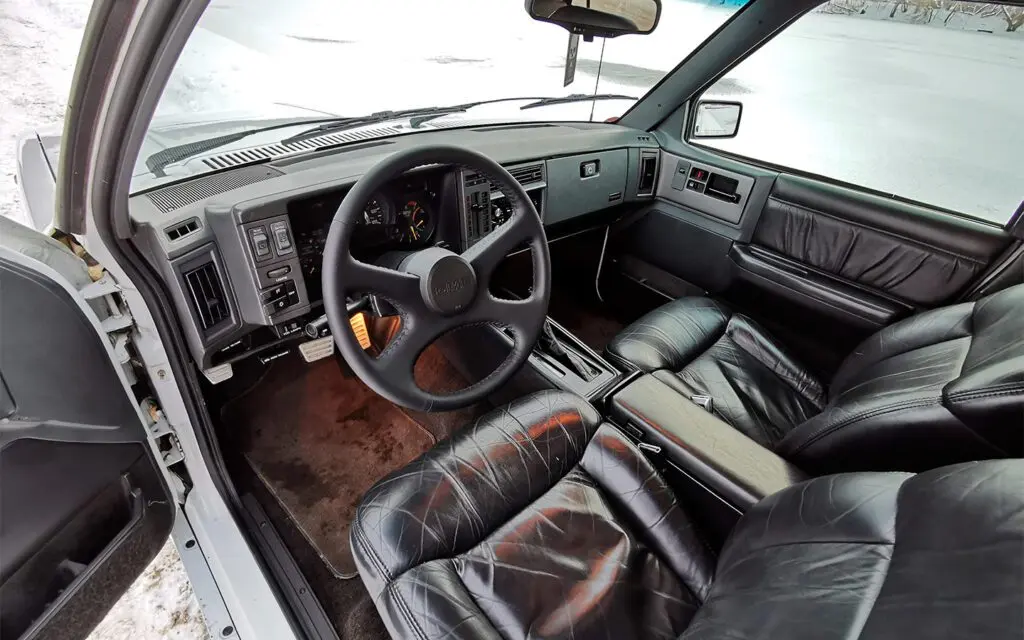
Yes, it has a 319-year-old supercharged engine, without any twin-scroll, so at low revs the turbine essentially does not work. But even in the original atmospheric version, thanks to the large volume, this unit developed a solid XNUMX Nm, so there are no problems with traction: just touched the accelerator - it went. The transmission absolutely imperceptibly goes over the gears (not every modern "automatic machine" can be so silky), the suspension smoothly works out irregularities despite the fact that there are springs and a continuous axle behind, visibility is beyond praise - well, just a darling, not a car!
True, this is if you do not press the gas to the floor. And if you press - the entire infernal essence of the "Typhoon" instantly comes out. After a little thought, the "automatic" drops the gear down, the turbine switches first to a whistle, then to a deafening furious hiss, which drowns out even the voice of the engine - and under this accompaniment GMC turns from an old "brick" into snow-white lightning, forcing the neighbors on the stream to wipe their eyes.

Quite frankly, acceleration at city speeds is not so phenomenal: Typhoon picks up speed very briskly, but takes rather with entourage and an amazing contrast of form and ability. And the overloads themselves are comparable to something like a diesel BMW X5 with 249 horsepower - convincingly, seriously and nothing more. But starting from a place is still a shock and awe.
The brake pedal must be pressed down with all his might - otherwise the frail mechanisms from a standard car will not keep the Typhoon in place. We raise the revs to three thousand workers - the GMC responds with a bloodthirsty roar and from the remarkable traction sags to one side, like a classic muscle car. Start! With a powerful jerk, without a hint of slipping, Typhoon breaks forward, leaving no bruises on my back, it seems, only thanks to the soft chair. The horizon goes down somewhere: the square nose is lifted up into the heavens, and approximately to the border of the second hundred, the super SUV looks more like a lost speed boat, only then returning to its regular position.
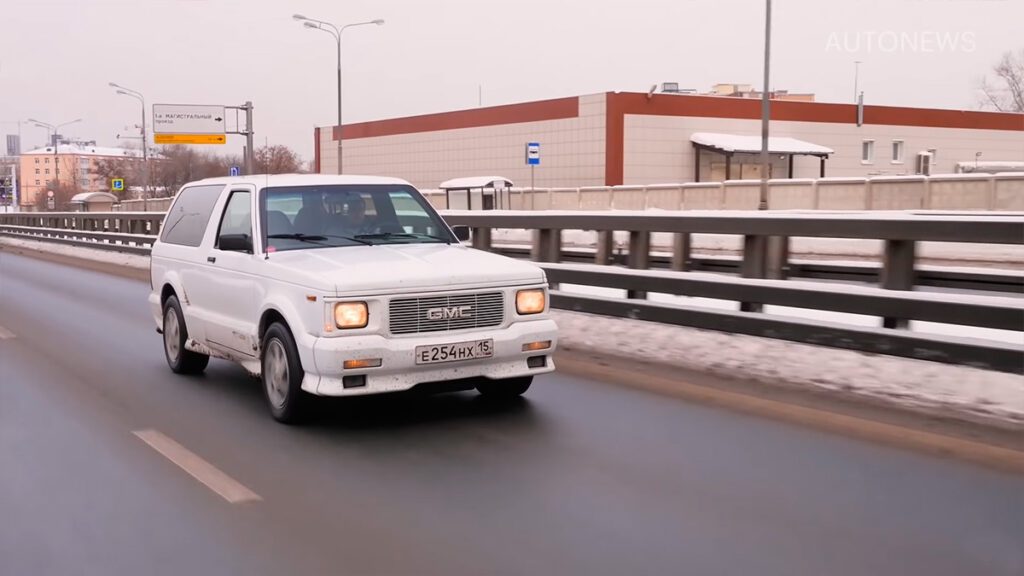
You want to enjoy this attraction again and again: every time an amazed-stupid smile appears on your face by itself - and this is now, in 2021. And 30 years ago Typhoon plunged many into a real primal horror.
Although he is still capable of scaring: it is enough to ask for speed not on a straight line, but in a turn. Except for the understatement, the suspension remained almost standard, no one touched the steering either - that is, the Typhoon turns exactly as you would expect from a frame American SUV of the late eighties. No way. A long, completely empty steering wheel, endless delays in reactions and rolls, like that boat. Plus the brakes, which do not match the speed of the car at all.
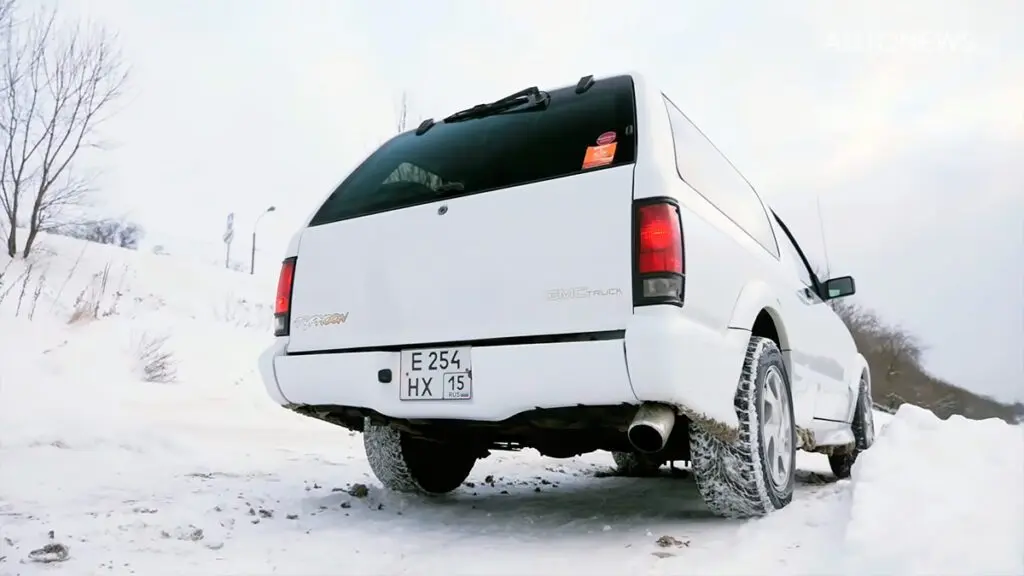
But the language does not dare to call it shortcomings - after all, the modern "Gelik" from AMG can be described with the same words. And nothing - loved, desired, immortal. Career "Typhoon" was much shorter: he left the assembly line in 1993, leaving no direct heirs. It is difficult to say what was the reason - whether the reluctance of GM bosses to support the still too audacious model, or public indecision. Still, admiring and actually buying are completely different things.
But Pandora's box, one way or another, was open. Very soon, the "charged" Ford F-150 Lightning appeared, Jeep released the Grand Cherokee with a mighty 5.9 engine, and with the release of the BMW X5, increased cross-country ability and dynamics finally ceased to be antonyms. Of course, it would be naive to believe that without the Typhoon and the Cyclone, the Bavarian crossover would not have been born - but, you know, a person would sooner or later go into space, regardless of Gagarin and even the entire USSR. Someone still has to be the first, open the locked doors to new corridors of the possible, and that's why the daring couple of GMCs must be remembered. And the fact that even 30 years later these cars are capable of giving almost childish delight makes them really great.
